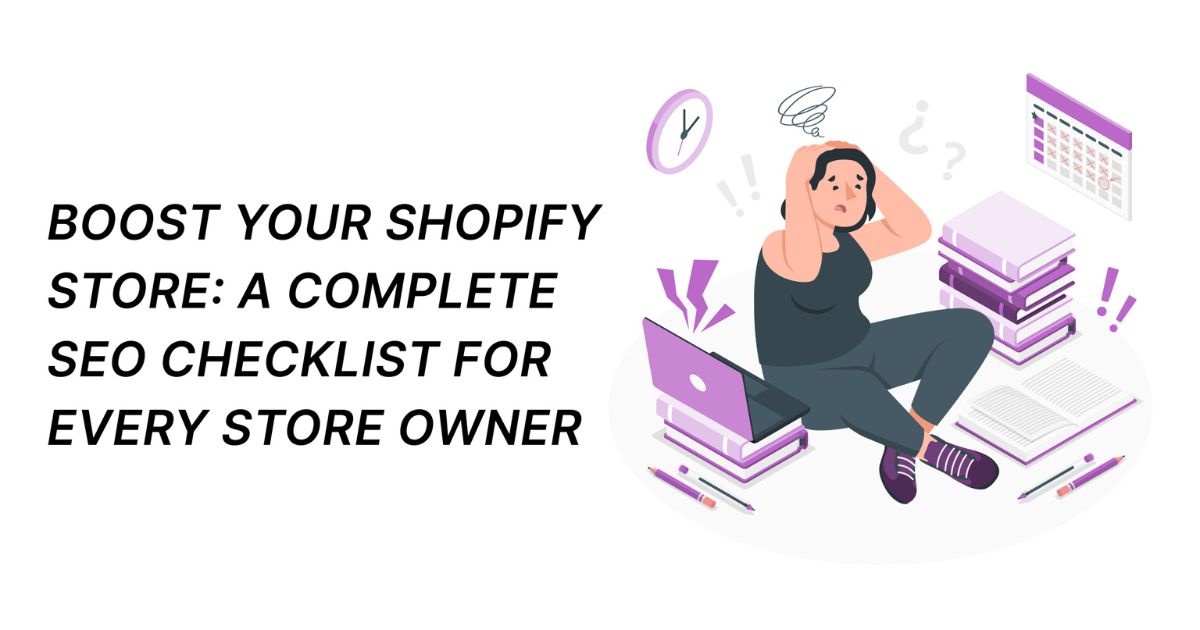Navigating the crowded online retail space can be daunting, especially with so many businesses vying for attention. Shopify stands out as a leading platform for launching online stores, packed with features to boost your brand. Yet, unlocking your store’s potential and drawing in more clients hinges on a robust understanding of search engine optimization (SEO).
A comprehensive checklist can guide you through optimizing your Shopify store for increased visibility. From selecting effective keywords to improving your site’s usability, this guide covers essential steps to attract more visitors and convert them into satisfied customers, ultimately driving traffic and sales.
Learn how to track your progress and adjust your strategies for even better outcomes, with the aim of driving traffic and sales with Shopify SEO expertise.
Identifying the SEO of Shopify
Search engine optimization is the process of making your website more visible in search engine results. It draws more traffic. A range of strategies are used in SEO for Shopify store owners. Some of it includes keyword research and site structure optimization The goal of this is to increase your store’s online visibility.
Important Components of Shopify SEO
There are SEO components and these are important for a Shopify store’s optimization. These components are the foundations of any successful SEO strategy. This is designed specifically for the Shopify platform.
Keyword Research:Finding the keywords and phrases that prospective buyers enter into search engines to look for goods or information is known as keyword research. This entails figuring out which keywords are most pertinent to your items and sector for a Shopify business. By understanding the language of your target audience, effective keyword research enables you to optimize your content and product pages.
On-Page SEO: On Page SEO pertains to optimizing web pages to improve ranking and attract relevant traffic. In the context of Shopify it involves ensuring that each product page blog post and content piece is created with SEO in mind. This includes enhancing title tags, meta descriptions, headings and content to incorporate keywords.
Technical SEO: Technical SEO focuses on the aspects that aid search engines in crawling and indexing your Shopify store efficiently. Components such as site speed, hosting, mobile responsiveness, SSL certification and structured data are integral to SEO. Implementing these elements enhances user experience. Boosts search rankings.
Content Marketing: Content Marketing entails producing consistent content to engage an audience. For Shopify store owners this could involve blogging about product related topics creating buying guides or crafting how to videos. Content marketing helps attract backlinks, increase user interaction and position your store as an authority in your niche.
Essential Shopify SEO Checklist
This is a compilation of steps that store owners should follow to enhance the visibility of their Shopify stores, on search engines. This guide is made to assist you in systematically and thoroughly optimizing your store for SEO;
- Conduct Comprehensive Keyword Research: Start by identifying the keywords that best describe your store. Always keep in mind factors like search volume, degree of competition, and relevancy.
- Optimize Your Store’s Structure: Make sure that both users and search engines can easily navigate your store. Your website should be arranged logically. This involves categorizing your products into sections and subcategories.
- Perfect Your On-Page SEO: Focus on optimizing each page of your site, including product pages and blog posts. This means incorporating keywords in titles, meta descriptions, content and image alt text.
- Improve Your Store’s Technical SEO: Verify that your store loads quickly and is mobile responsive. Maintains a connection. Address any crawl errors. Ensure that your sites structure facilitates indexing by search engines.
- Leverage High-Quality Content Marketing: Develop content within your niche to engage with your audience and drive traffic to your store. This can be achieved through formats such as blogging, video content or infographics.
- Build Quality Backlinks: Look for chances to have established websites link back, to your shop. This can involve partnerships contributing guest posts or producing content worth sharing.
- Monitor Your Progress: Utilize analytics and SEO resources to monitor how well your shop is doing. It’s important to assess your SEO approach and adjust based on outcomes, for enhancement.
From the simplest keyword research to the more complex parts of technical optimization and content marketing, each of these processes is intended to address one specific aspect of SEO. By making sure your Shopify store is optimized, you may improve your chances of appearing higher in search engine results and drawing in more consumers.
In summary
Search engine optimization for your Shopify store is an ongoing effort that may have a big impact on sales and exposure for your company. Your store will be in a position for success if you follow through the SEO checklist. Keep in mind that SEO requires persistence and time, the rewards in the long run make the work worthwhile. As you continue to research and optimize, you should see your Shopify store ranks in the search engine rankings.


